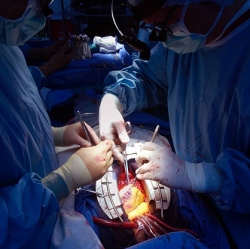
One of the ripest markets for Google Glass and Glass-based apps may be healthcare. While patient care has become increasingly data-driven, doctors need a way to receive the data while remaining hands-on with patients. Can wearables in the OR improve clinical outcomes?
Although it makes sense, there’s little empirical evidence for or against wearables. But a new study may help answer that question. The study was conducted by Stanford Medical School and VitalMedicals, which makes the real-time vitals app (VitalStream) that was running in the Google Glass wearables during the surgeries. In it, a group of 20 Stanford residents performed two types of surgeries, on dummies, one with the help of Google Glass and one without.
Their performance was markedly better while using Glass. The residents were asked to perform relatively routine procedures on the dummy patients, but then unbeknownst to them, a sudden complication occurred, VitalMedical’s chief science officer Ash Eldritch told VentureBeat. So the residents were required to perform an urgent procedure on the patient.
One test demanded that the resident perform a bronchoscopy, in which the surgeon makes an incision in the patient’s throat to access a blocked airway. The surgeon might also insert a camera down into the lungs to find problems. The residents using VitalStream recognized critical desaturation 8.8 seconds faster than the control group (who didn’t wear Glass).
